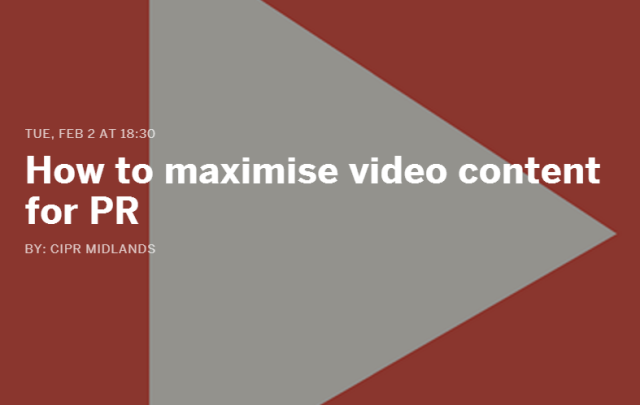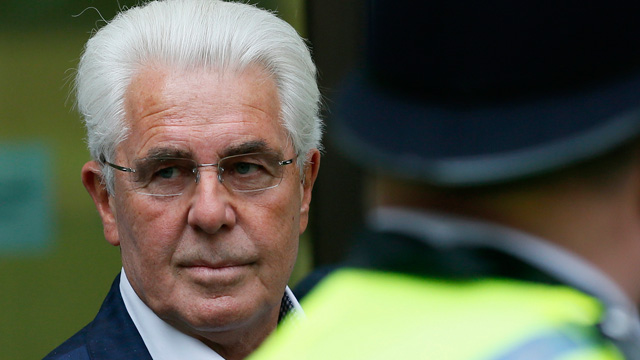Making that transition from education into professional life can often be a struggle. Suddenly, you’re expected to hit the ground running and put all that theory into practice with often only the support of your colleagues and online career advice to guide you.
That being said, it’s important to get an idea of what you’re jumping into as an Account Executive so – taking into consideration that no day is really the same in PR – I thought I’d grant you all a small exposé as to what a normal day at London’s Houston PR (the agency which gave me my ‘break’ into the world of professional public relations) would involve.
6am – My first alarm which (unsurprisingly) I would snooze… repeatedly. Suffice to say, I’m not a morning person.
7.10am – Leave for the bus, usually running because I’d rather do that than spend an extra second standing out in the cold/wet.
7.30am – The bus arrives. It’s supposed to be an hours journey by (perhaps typically for the London rush hour) it never is; luckily I’m early enough on the route to regularly manage to get a seat for the majority of the journey.
8.40am – Arrive in central London and buy coffee no. 1 of the day as well as a bagel or small salmon baguette. The baristas in both Pret and Cafe Nero know me on sight, but Cafe Nero wins the morning coffee slot with their extra shot – something I definitely need.
8.45am – Arrive at the office (just around the corner) and check national news websites, my to-do list for the day and my inbox (both in-case of something urgent that needs attending to and also in case I’ve heard back from any journalists).
9.10am – Weekly staff meeting to discuss updates on all clients as well as where we are within our new business pipeline.
9.40am – Quick briefing with my direct superior to go over my notes and discuss direct actionables for the week which I add to my to-do list in order of priority. I also provide an update on the progress of the bi-weekly insight sessions I currently run on social management and analytical tools.
9.50am – Check keywords for whether any coverage has been achieved overnight and (after verifying them) add any new pieces to the clients’ cuttings files and coverage documents alongside their respective details. We have a couple of clients who prefer daily updates so this is a common (and relatively simple) task for when I first get into the office.
10.10am – A few responses have come in from a couple well-known magazines requesting more information about a client’s product line. There are also one or two blogger requests for items to review. I check their circulation; one has a high enough reach to be suitable so I fire off an email checking how the client would prefer it handled in terms of logistics.
10.30am – Called into an impromptu meeting by an Account Manager to discuss a new client whose meeting they want me to sit in on later today.
11am – Coffee. Coffee. Coffee. And I finally get the chance to eat the breakfast I’ve been picking at for the last two hours.
11.15am – Back at my desk and client has called in needing a list of all major technology publications so I start going through our online databases pulling out titles that are appropriate for their market, outlining their circulation as well as contact information for the most appropriate journalist, and collating them within a report to mail over.
12pm – A call comes in from a client requesting feedback on something I have been involved in but not directly enough to be able to help. She sounds stressed and expresses that it’s needed within the next day or two. I make a note of her request and forward it to the appropriate colleague with an offer to handle it if needed; they’re in meetings for most of the day but will most likely be checking email periodically. I also make a point to reassure the client and give a fair estimate of when she can expect to hear from us. I’m hoping that after a month or so of emails, she might remember me – she doesn’t, but she sounds a lot more positive by the end of the call so I hope she will do soon.
12.10pm – Back to trawling databases for leads. I’m now cross-referencing the list I’ve compiled against publications’ reach and the names of journalists with whom I know our agency has a pre-existing relationship. It’s always nice to skip the introduction stage after all.
12.30pm – Proof and make edits to a press release that is due to go out. It needs bulking out with more facts and/or quotes so I trawl through the hivemind of Google for something appropriate and tweak it before sending it back to my colleague to go out.
1pm – The coverage report I sent out for one of my clients was missing a couple of items that didn’t show up on our media monitoring. The client noticed the omission and – given that its the second time in as many weeks that our cuttings service hasn’t picked up everything it should – understandably they’re pissed and (because they know it’s not an oversight on our end) I’m tasked to recify the issue and liase with the media monitoring agency to try and find out where the gap is in their scope.
1.20pm – Lunchtime! Due to living in a glorified box without kitchen facilities, this is my main meal of the day so I take my leave of the office for a short walk and some “me” time (often used to plan these blog posts) before making a choice on what to eat… working on the Strand means the options are endless so today I swing by Koshari Street (an Egyptian street food cafe on St Martin’s Lane) for a Lentil and Swiss Chard soup.
2.20pm – Social media is an important and essential tool for both our clients and our business. To keep ourselves up to date with the myriad of tools and tricks out there, I host a bi-weekly insight session on key tools that would benefit specific clients but this means taking the time to research and assess their relevance before adding the relevant details to the powerpoint I’m designing.
3.30pm – I sit in on a client meeting with a manager and the MD. We have a couple of international clients so despite the difficulty of juggling timezones, regular conference calls allow us to better understand their needs and expectations as well as making sure they appreciate our role and where we are within their campaign.
4.30pm – The meeting took longer than expected so I start finishing up today’s To-Do list and make my final calls to journalists following up on coverage or pitches.
5pm – Before I leave, I tidy my desk space and write up the key actionables for tomorrow morning.
5.30pm – Leave the office and grab a sandwich or soup before I get to the bus stop. I can already see that the traffic is insane and – as more people leave the office – I know it’s only going to get worse.
7.15pm – Home. Finally.
7.30pm – Shower
8pm – Blog and skype my family and friends.
9.30pm – Put on a film and try to relax. More often than not I end up scrolling through Twitter and industry news sites.
11pm – Sleep.




 Infamous former celebrity publicist,
Infamous former celebrity publicist, 




